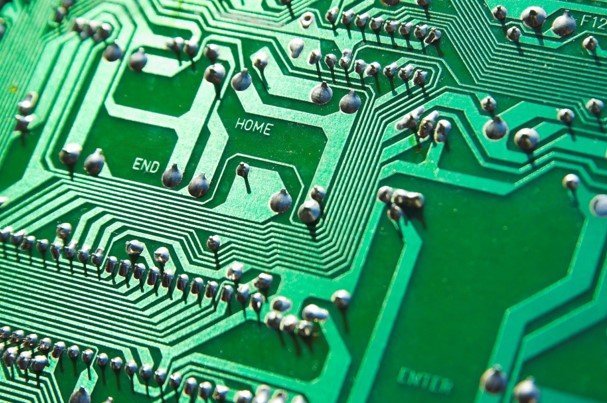Printed Circuit Boards, or PCBs, are the unsung heroes of our digital age. They are the foundational platforms for nearly all modern electronics. The global PCB market is expanding rapidly, projected to hit $80.1 billion by 2023, driven by the increasing digitalization of our world. This article explores the key industries fueling this remarkable growth and how PCBs are shaping their future.
What is Fueling the Growth of the PCB Market?
The continuous expansion of the PCB industry isn’t happening by chance. Several key factors are pushing the demand for these essential components to new heights.
A primary driver is the explosion of connected devices, often referred to as the Internet of Things (IoT). From smart home appliances to wearable fitness trackers, these gadgets all rely on sophisticated PCBs to function. This trend shows no signs of slowing down, ensuring a steady demand for PCBs.
Another major catalyst is the rapid advancement in automotive electronics. Cars are no longer just mechanical machines; they are becoming computers on wheels. This evolution, coupled with the rise of electric vehicles (EVs), has created a massive new market for highly reliable and specialized circuit boards.
Consumer Electronics: The Dominant Force in PCB Demand
When you think of a circuit board, you likely picture the inside of a computer or a smartphone. It’s no surprise that the consumer electronics sector is the largest segment of the PCB market, holding a massive 60% market share.
This industry encompasses a vast array of products that are central to our daily lives. The functionality of these devices depends entirely on the quality and design of their internal PCBs.
Some of the most common applications include:
- Mobile devices like smartphones and tablets
- Computers, laptops, and peripheral electronics
- Entertainment systems such as televisions and gaming consoles
- Home appliances, including smart refrigerators and washing machines
To meet industry standards and ensure devices work perfectly, PCBs for this segment are typically rigid and must pass strict quality control measures. The sheer volume of consumer electronics produced globally makes this sector the bedrock of the PCB industry.
The Automotive Sector: The Fastest-Growing PCB Application
While consumer electronics holds the largest share, the automotive industry is the fastest-growing segment for PCB applications. Modern vehicles are packed with electronic systems that manage everything from navigation and entertainment to critical safety features.
Because safety is paramount, PCBs used in cars must be incredibly reliable and durable. They need to withstand constant vibrations, extreme temperatures, and other harsh conditions. For this reason, flex PCBs are the most common choice in the automotive industry.
These flexible boards are not only resistant to vibrations but are also smaller and lighter, which is crucial for saving space and improving fuel efficiency in modern vehicle designs. The growing demand for features like advanced driver-assistance systems (ADAS) and in-car connectivity continues to drive innovation and growth in this segment.
Healthcare and High-Density Interconnect PCBs
The healthcare industry relies on highly sophisticated electronic devices for diagnostics, monitoring, treatment, and research. Printed circuit boards are at the heart of this medical technology, from large MRI machines to tiny implantable devices.
To fit into small devices like pacemakers, monitors, and medical implants, the PCBs must be incredibly compact and dense. This is why High-Density Interconnect (HDI) PCBs are frequently used in the medical field. HDI technology allows for more components to be mounted in a smaller area, enabling the miniaturization of life-saving equipment.
Flex PCBs are also popular in healthcare due to their ability to bend and fit into uniquely shaped devices, such as hearing aids and flexible medical probes.
A Look at the Global PCB Market by Region
The production and demand for PCBs are not evenly distributed across the globe. The Asia-Pacific (APAC) region stands as the undisputed leader, dominating the market landscape.
This dominance is largely due to the shift of electronics manufacturing to countries like China, which offer lower production costs. Here is a breakdown of the market by major regions.
| Region | Market Size (Estimated) | Key Drivers & Suppliers |
| Asia-Pacific (APAC) | $54.78 Billion | Low production costs, major electronics manufacturing hub. Suppliers include ZD Tech, Unimicron, Nippon Mektron. |
| North America | $3 Billion | Growing automotive demand, restrictions on external sourcing. Suppliers include Multek, Sanmina, Mflex. |
| Europe, Middle East, & Africa (EMEA) | $2.4 Billion | Automotive industry innovation, demand for safety and automation. Suppliers include Wurth Elektronik, Schweitzer, Somacis. |
The Role of PCBs in Telecommunications and Broadcasting
The telecommunications industry, with a significant 28% market share, is another major consumer of printed circuit boards. These components are essential for the infrastructure that keeps us connected, from cell towers to broadcasting equipment.
PCBs in this sector must be durable and lightweight, as telecommunications setups often require a high density of machinery. They are used in countless applications, including booster stations, filtering devices, receivers, and mixing decks.
Due to the need for durability and efficient heat dissipation, aluminum PCBs are often preferred over standard variants. They can handle higher power levels and operate reliably in the demanding environments of telecommunications infrastructure.
Frequently Asked Questions about the PCB Market
Which industry uses the most printed circuit boards?
The consumer electronics industry is the largest user of PCBs, accounting for 60% of the global market. This includes everything from smartphones and computers to home appliances and entertainment systems.
Why is the automotive PCB market growing so quickly?
The automotive segment is the fastest-growing due to the increasing number of electronic features in modern cars, such as navigation, safety systems, and entertainment. The rise of electric vehicles is also a major contributor to this growth.
What type of PCB is used in medical devices?
Medical devices often use High-Density Interconnect (HDI) PCBs and Flex PCBs. HDI boards allow for miniaturization, while flex PCBs can fit into small or irregularly shaped devices like implants and monitors.
Which region dominates the global PCB market?
The Asia-Pacific (APAC) region dominates the market, holding nearly 90% of the global market share. This is primarily due to the concentration of electronics manufacturing in countries with low production costs, such as China.
What is the future outlook for the PCB industry?
The future of the PCB market looks promising, with trends like miniaturization, sustainability (green PCBs), and automation driving further innovation. The growing need for PCBs in industrial, transport, and manufacturing applications will continue to expand the market.








Leave a Comment